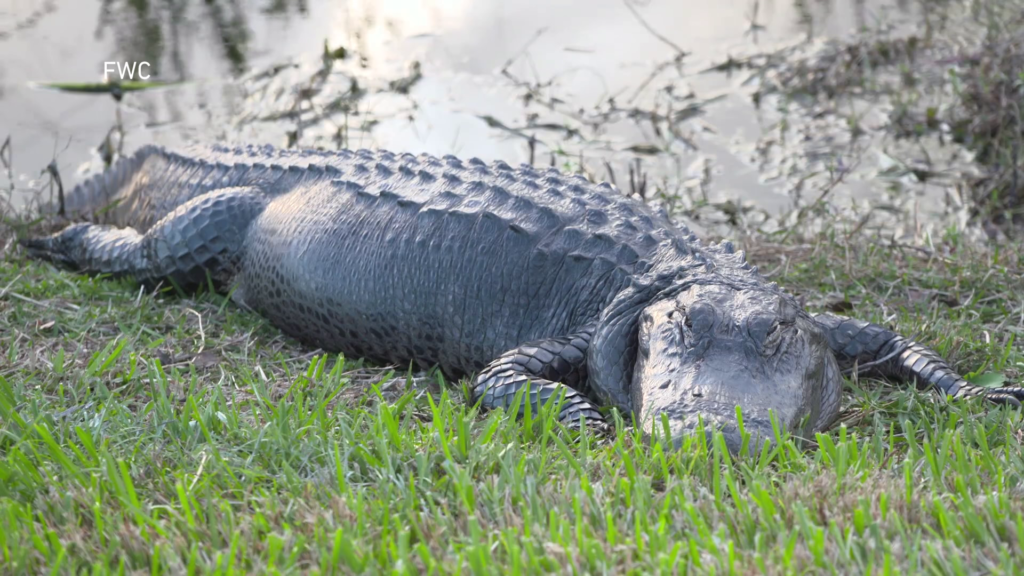FORT MYERS
Most research on alligators is done in large preserves like the Everglades, but a team from Florida Gulf Coast University wants to learn more about the alligators that live closer to humans.
Encountered in the wild, alligators can be frightening—beady eyes shining in the water after sundown. If you’re not from Florida, you may run away. If you are from Florida, you may think you’re supposed to zig-zag (no, you don’t need to).
If you go to FGCU, though, you may run toward them, and Win Everham, professor of ecology and environmental studies, even gets in the water with one in the name of research.
FGCU researchers are studying alligators that live near humans. (CREDIT: FWC)
“Alligators are a critical part of the ecosystem, and so we want to minimize negative interactions with alligators and humans,” Everham said. “We’re trying to figure out why do they move; when do they move?”
To do this, Everham’s team tags and tracks the alligators.
“Once a week, we go out, and we see if we can find them,” said Gillian Stocking, head researcher, and FGCU junior.
After the team has found one, the hard part begins: Using an alligator-friendly and FWC-recommended method, the team must use a snatch hook. This is no easy feat, especially if you’re doing it in a suit and tie.
FGCU researchers are studying alligators that live near humans. (CREDIT: FWC)
“These are stormwater ponds that have been excavated, so the bottom is often very rocky, and if we don’t get a good toss over the alligator, you can get hung up on a rock bottom,” Everham said.
They tried again and again and again until they finally nabbed the perfect test subject.
“We finally caught the one I’ve been wanting to catch… his name is Qui-Gon,” Stocking said. “This is one of our bigger ones. He’s over, like, seven-foot.”
The researchers carefully carried the alligator to shore and tagged him.
“This one will be on record for the fastest catch we’ve ever done, of nine minutes and 30 seconds,” Stocking said.
“It’s always good to safely capture an animal, get it into the study and then release it with nobody hurt, the animal not hurt,” Everham said. “And it’s cool to do it in really quick time.”
Alligators can be scary, and you may not want them trespassing on your property, but they were here first.
“I always want people to recognize that alligators are natural here. They’re native here. They’re a really cool part of our ecosystem,” said Everham.
Found in all 67 Florida counties, the species has gone from endangered to a population of 1.25 million in fifty years.
“So on campus, we have about 10 to 15 alligators,” said Stocking.
FGCU’s abundance of wetlands and ponds provides the ideal habitat.
“Lot of the study on American alligators comes from these big preserves, like Everglades. So, what are alligators doing away from humans? And what we really want on this campus is, what are they doing when there’s lots of humans around,” said Everham.
The FGCU researchers were able to corral and tag an alligator on campus. It’s a story Stocking will tell forever, but research is what matters most. “Just don’t be scared of them. They’re on the environment, just like how we took over their land. They’re trying to coexist with us and being able to coexist with them. It makes our lives a lot easier.”
Without the top predator, our ecosystems would fall out of balance—a future no one wants to see.
WINK NEWS

